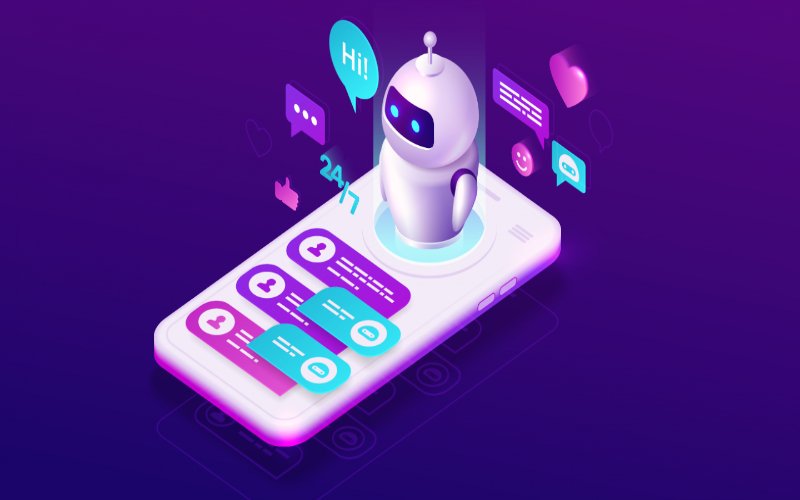AI-powered chatbots are revolutionizing how businesses communicate with customers, offering enhanced efficiency and personalization. These advanced tools use artificial intelligence to simulate human conversation, making interactions smoother and more intuitive. Unlike their traditional counterparts, AI-powered chatbots leverage sophisticated algorithms to provide accurate and contextually relevant responses.
What Are AI-Powered Chatbots?
AI-powered chatbots are sophisticated software programs designed to engage in human-like conversations using advanced artificial intelligence technologies. They utilize Natural Language Processing (NLP) and Machine Learning (ML) to understand and respond to user queries. By learning from previous interactions, these chatbots continually improve their performance, offering increasingly precise and helpful responses.
Key Features of AI-Powered Chatbots
AI-powered chatbots come equipped with several key features that set them apart:
- Natural Language Understanding (NLU): This feature allows chatbots to comprehend and interpret user input in a conversational manner, accommodating various language nuances and contexts.
- Integration Capabilities: These chatbots can seamlessly connect with existing systems, such as CRM and ERP platforms, to deliver more contextual and accurate responses based on user data.
- Customization Options: Businesses can tailor the chatbot’s responses and functionalities to align with their specific needs and preferences.
- Analytics and Reporting: AI-powered chatbots include tools for tracking performance, analyzing user interactions, and refining their capabilities based on data-driven insights.
How AI-Powered Chatbots Enhance Customer Experience
AI-powered chatbots significantly enhance the customer experience by offering several distinct advantages:
Instant and Efficient Responses
One of the major benefits of AI-powered chatbots is their ability to provide immediate answers to user inquiries. This capability reduces wait times and improves user satisfaction, as chatbots can handle multiple interactions simultaneously without delays.
Personalized Interactions
These chatbots use data from past interactions to personalize responses, making conversations more relevant to individual users. By understanding user preferences and behavior, AI-powered chatbots deliver tailored recommendations and solutions, enhancing overall engagement.
Implementing AI-Powered Chatbots in Your Business
Integrating AI-powered chatbots into your business involves a few crucial steps:
Define Objectives
Begin by setting clear goals for what you want to achieve with your chatbot. Whether it’s improving customer support, automating routine tasks, or boosting engagement, well-defined objectives will guide the development and deployment of your chatbot.
Choose the Right Platform
Selecting a suitable chatbot platform is essential. Ensure the platform supports advanced AI capabilities and integrates well with your existing systems. Opt for a platform that offers continuous learning features to help your chatbot improve over time.
Best Practices for Designing AI-Powered Chatbots
To ensure your AI-powered chatbot performs optimally, follow these best practices:
Create User-Friendly Interactions
Design your chatbot to engage users in a natural, intuitive way. Use conversational language and provide clear options for navigation. Avoid overly complex dialogues that could confuse users and detract from their experience.
Test and Iterate
Thorough testing is crucial before launching your chatbot. Collect feedback from users to refine its responses and functionality. Regular iteration based on user input helps maintain the chatbot’s effectiveness and user-friendliness.
Challenges and Solutions for AI-Powered Chatbots
While AI-powered chatbots offer numerous benefits, they also face certain challenges.Here’s how to handle a few such problems:
Handling Complex Queries
AI chatbots may encounter difficulties with complex or ambiguous queries. Implement mechanisms to escalate such queries to human agents or provide alternative solutions when necessary.
Maintaining Accuracy
Regular updates to the chatbot’s knowledge base and training data are essential for maintaining accuracy. Continuous learning and adjustments are crucial for ensuring the chatbot remains effective and relevant.
Future Trends in AI-Powered Chatbots
Looking ahead, several trends are expected to shape the future of AI-powered chatbots:
Enhanced Personalization
Future AI-powered chatbots will leverage advanced AI to offer even more personalized interactions, based on detailed user behavior and preferences. This will further enhance user engagement and satisfaction.
Improved Multimodal Interactions
Technological advancements will enable AI-powered chatbots to interact through various modes, including voice, text, and visual inputs. This will provide a more versatile and engaging user experience.
Greater Automation
AI-powered chatbots are anticipated to handle more complex tasks and workflows, streamlining operations and improving efficiency across different industries.
Also visit on techitl.com.
